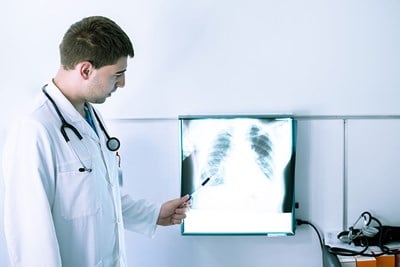Popcorn lung, otherwise known as bronchiolitis obliterans, is a rare and life-threatening condition of the lungs in which their tiny air sacs become scarred. Popcorn lung can be contracted by most anyone, being well-informed can prevent this. Here is what you need to know about bronchiolitis obliterans.
Popcorn Lung Symptoms
In the early stages of popcorn lung, a patient may not realize anything is wrong. The first symptoms to arise will be a shortness of breath and dry cough. Because of this, many cases of popcorn lung are misdiagnosed as asthma, chronic bronchitis, or even pneumonia. The disease progresses slowly and subtly, but eventual symptoms can include weight loss, night sweats, and fever. These further symptoms can develop without warning.
Popcorn Lung Causes
To work on preventing the disease, we must have some idea about what causes it. Sadly, there are a lot of theories about what causes popcorn lung and very little is known for sure. One cause is transplant rejection in organ transplant patients. If a patient is given a new set of lungs and their body rejects the new set, then popcorn lung can occur.
The largest known cause comes in the form of industrial inhalants. Specifically, a large number of popcorn lung cases came from workers in a microwave popcorn factory who were exposed to a chemical known as diacetyl. This chemical is used to produce artificial butter flavoring, as well as being found in candies and naturally occurring in wine. In 2007, there was also a case of a heavy and habitual consumer of microwave popcorn developing the disease after smelling the buttery fumes.
Popcorn Lung Risk Factors
While popcorn lung can be found in anyone who has been exposed to chemicals that may cause the disease, some are at greater risk. Factors which cause for increased risk of popcorn lung include:
- Work Conditions: Manufacturing jobs that make use of chemicals such as diacetyl increase the chances of contracting popcorn lung.
- Smoking: Smokers can find themselves at an increased risk of popcorn lung.
Popcorn Lung Diagnosis
Diagnosis of popcorn lung is key. However, multiple tests are needed to be sure of the diagnosis. Tests that are normally used include chest x-rays, diffusing capacity of the lung tests (DLCO), spirometry, lung volume tests, high-resolution CT (HRCT), and lung biopsy.
DLCO and spirometry are both simple measurements taken of your breathing. Spirometry simply measures the amount you inhale and exhale, while DLCO measures the difference between inhaled and exhaled carbon monoxide. An HRCT is similar to an x-ray—it uses a CT scanner to take images of your lungs while you breathe. Finally, a biopsy will take a small tissue sample for examination by doctors.
Popcorn Lung Treatments
There is no definitive cure for popcorn lung. After contracting the disease, management is the best that can be done. Severe cases may call for a lung transplant; however, as stated previously, a rejection of transplanted organs can lead to popcorn lung appearing again. The most effective way to combat popcorn lung is in prevention. In cases where patients may be exposed to chemicals such as diacetyl, respiratory protection is needed.



